Customize Interface |
  
|
The command for customizing the system is Customize:
Icon |
Ribbon |
|---|---|
|
Get Started > Options > Customize > Customize…
|
Keyboard |
Textual Menu |
<SB> |
Customize > Customize… |
When Ribbon Mode is off the command can also be called by selecting the Customize... option in the contextual menu invoked by clicking ![]() on the instrumental or system toolbars.
on the instrumental or system toolbars.
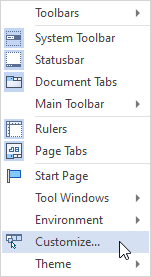
When Ribbon Mode is on the command can also be called by selecting Customize tab... or Customize group... options in the contextual menu invoked by clicking ![]() on the ribbon or textual menu.
on the ribbon or textual menu.
![]()
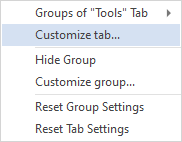
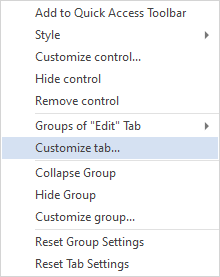
The command brings up a dialog box with various groups of parameters available on the respective tabs.
Customizing the Ribbon Interface
In the ribbon interface, all commands are divided into tabs. The title of each tab reflects the content. Team icons are grouped.
The tape adjusts to the current operating mode. For example, the 3D Model and Drawing tabs change when switching between 3D and 2D windows.
The system remembers on which tab the last selected command was located. If you select a command from the Measure tab in the 3D window, and then continue working in the 2D window, then the next time the 3D window is activated, the tab with the last command used in the 3D window will be active.
The ribbon can be hidden by double-clicking on it. In this case, it reappears when you select any of its tabs. The tape is restored by a second double click.

Tabs can be switched with the mouse wheel by hovering over them and rotating the wheel.

If several equivalent commands in the ribbon are combined into a drop-down list, then the last selected command is remembered.

For personalization, it is possible to edit existing tabs and create your own tabs with the necessary commands and operations.
The user can hide groups in the feed that he never uses.

In the ribbon there is an option to collapse\restore groups of commands.
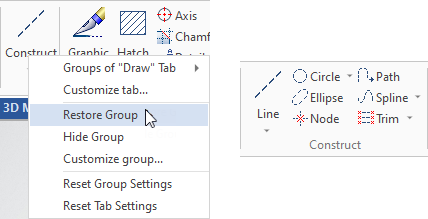
Hidden groups can be restored from the context menu, which is called when you click in an empty space on the ribbon.
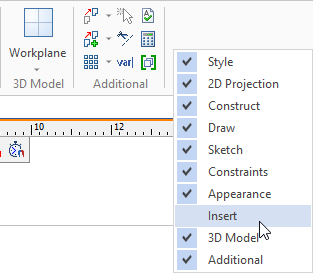
For any of the buttons in the ribbon, you can call the context menu, in which you can customize the display style of the button or hide it without entering the Settings.
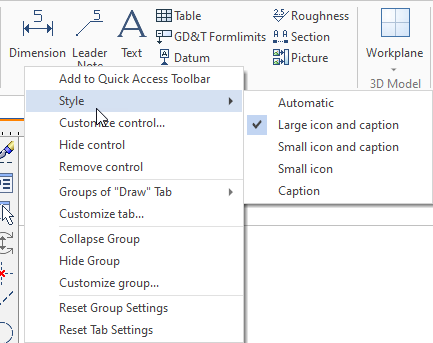
It is possible to add fragments from libraries to the ribbon. To do this, in the Customize command on the Ribbon tab, select the Insert Fragments from Library category and drag the required files onto the Ribbon tab. This allows you to create your own ribbon tabs with library items or add them to existing tabs.
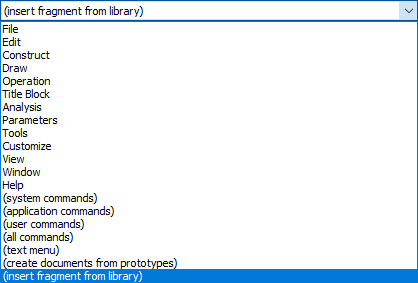
When you select the Create documents from prototypes, you can add an icon for creating a new document based on the specified prototype on the selected tab.
Hints
When you hover the cursor over a command icon, a short hint appears. If you hold the cursor for three seconds, an extended hint with an illustration will appear.
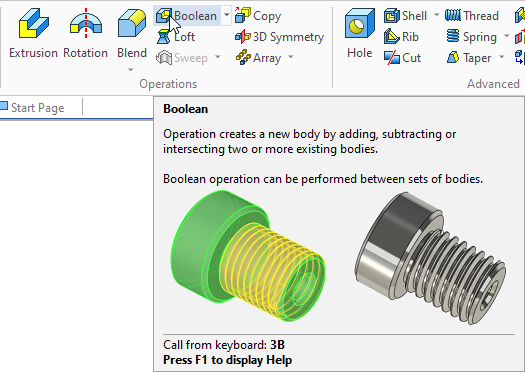
Similar short and extended hints exist for command and operation options.
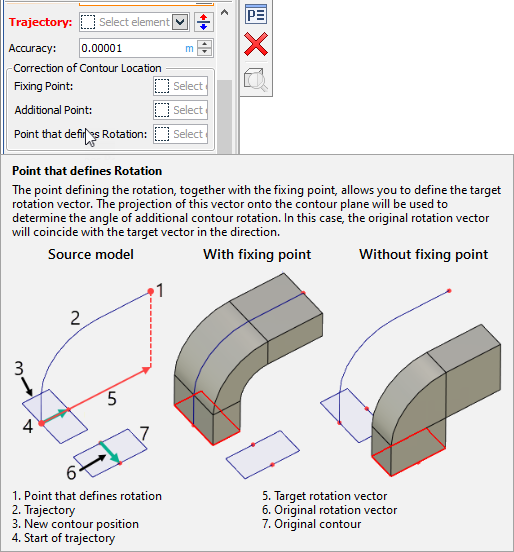
If necessary, you can disable all extended hints in the Customize command on the Options tab.

Textual interface

Main Menu contains the textual menu of the T-FLEX CAD commands by groups.
Main Toolbar contains icon buttons for T-FLEX CAD commands. Besides the main toolbar, the application window of the system can contain several toolbars (including the toolbars created by the user). Toolbars can be docked along one of the main window borders, or stand alone as floating windows.
System Toolbar contains the fields for modifying current settings of entities, such as color, line type, level, and layer. Also contains controls for modifying layer configuration, level configuration of the current document, and selector settings.
Topics in this section: